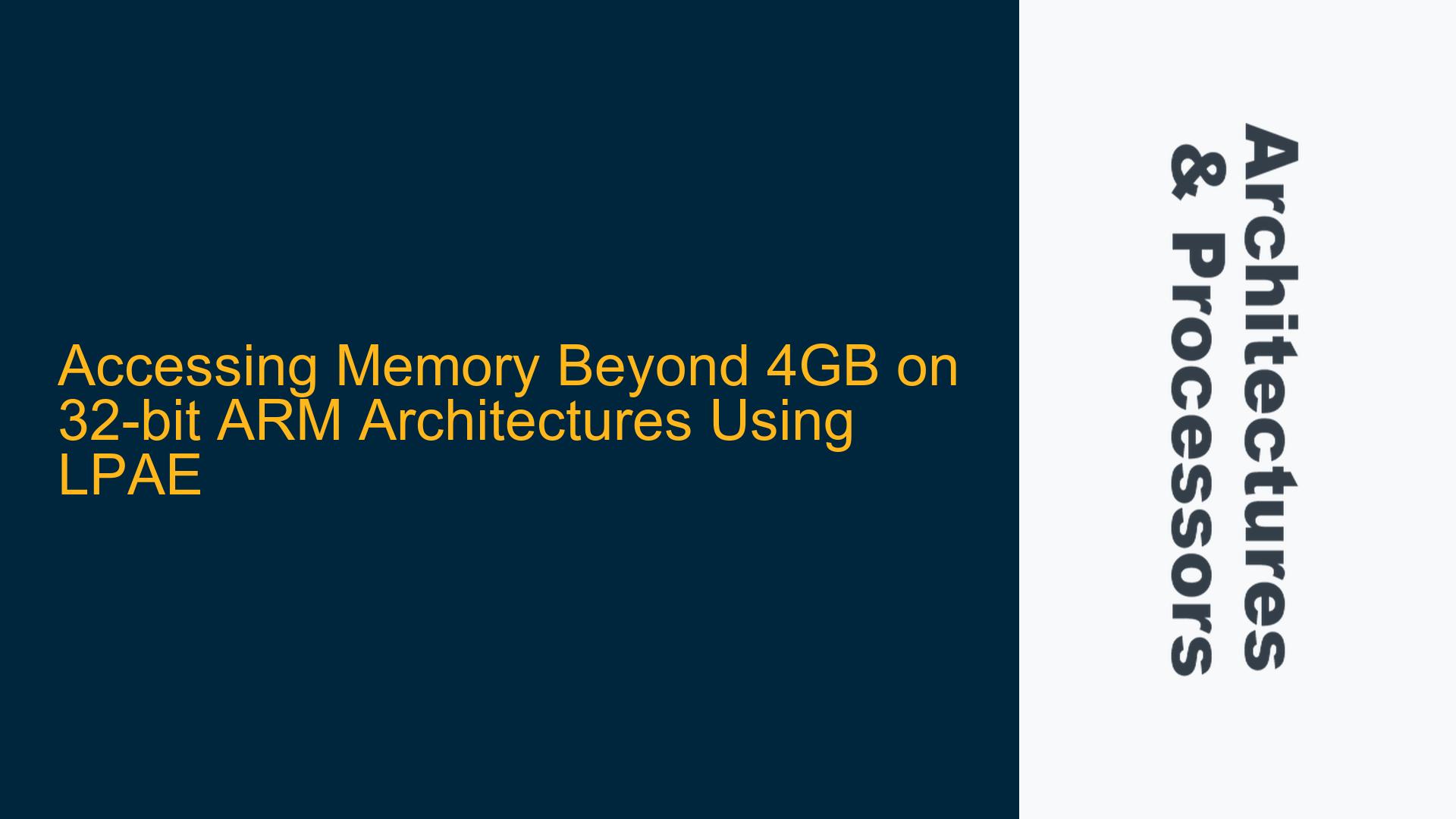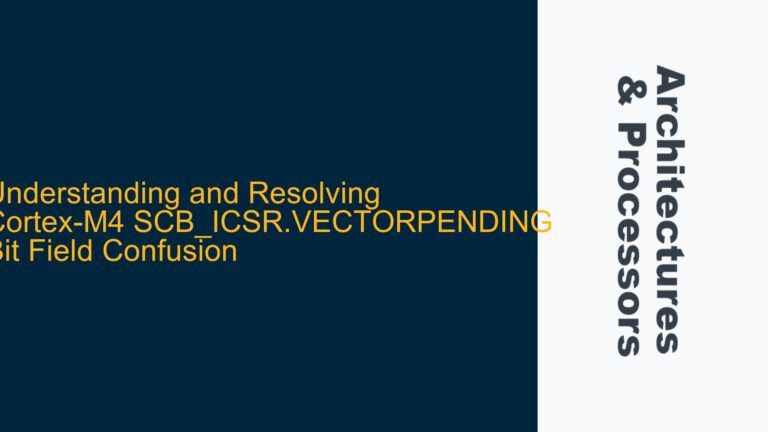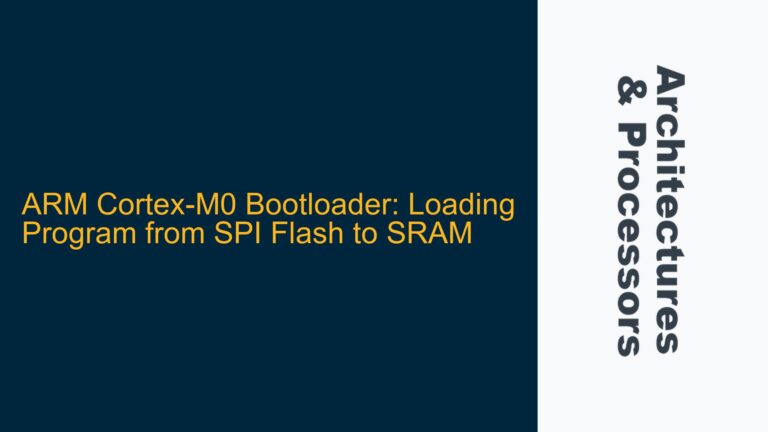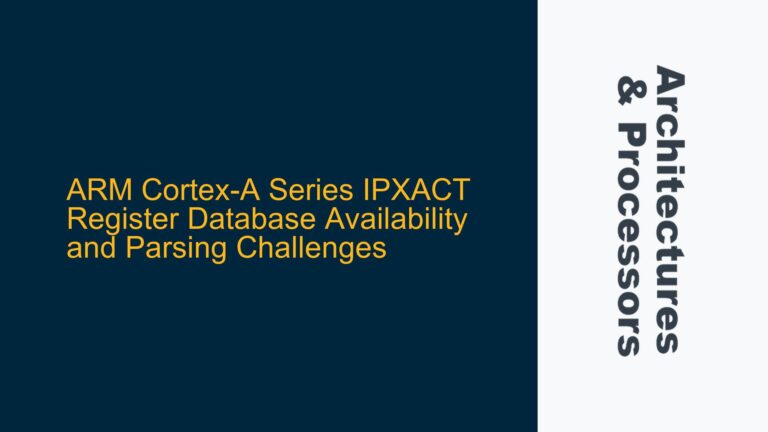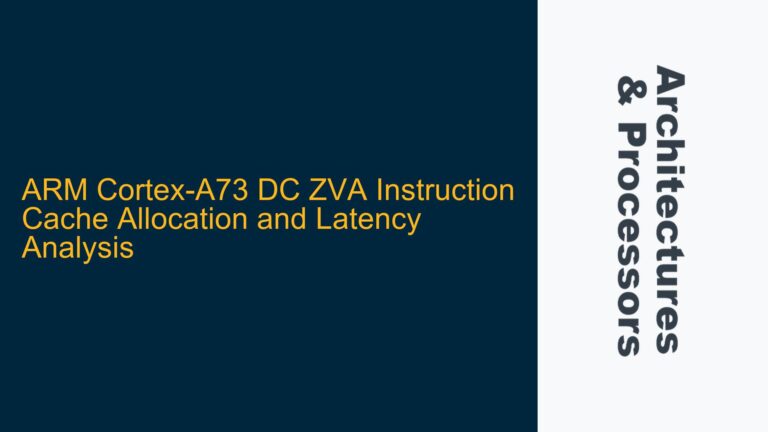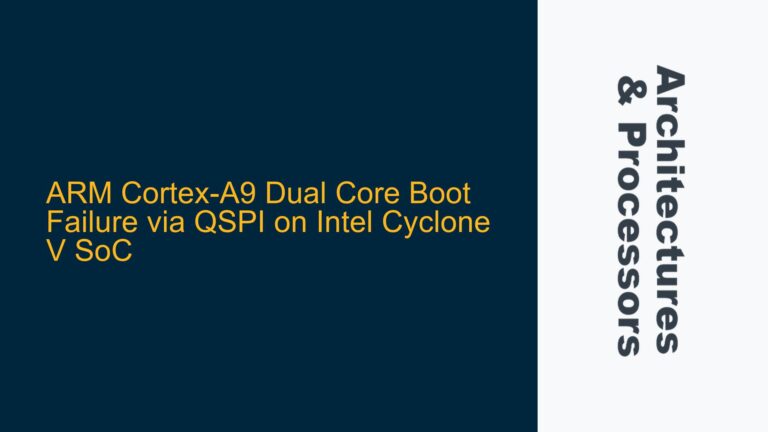Understanding the 32-bit Address Space Limitation and LPAE
The core issue revolves around the inherent limitation of 32-bit architectures, which can directly address only 4GB of memory due to the 32-bit address space. This limitation arises because a 32-bit register can represent only 2^32 unique addresses, each corresponding to a byte in memory. However, modern embedded systems often require access to more than 4GB of memory, especially in applications such as high-performance computing, large-scale data processing, and advanced multimedia systems. This is where ARM’s Large Physical Address Extension (LPAE) comes into play.
LPAE is a feature available in some 32-bit ARM cores, particularly those in the A-profile family (e.g., Cortex-A15, Cortex-A7). It extends the physical address space from 32 bits to 40 bits, allowing access to up to 1TB of memory. However, it is crucial to note that LPAE does not change the size of the virtual address space, which remains 32 bits. This means that while the system can have more than 4GB of physical memory, a single process is still limited to a 4GB address space at any given time.
The key to understanding LPAE lies in the translation tables used by the Memory Management Unit (MMU). In a standard 32-bit system, the MMU uses a two-level page table structure to translate virtual addresses to physical addresses. With LPAE, the MMU employs a three-level page table structure, enabling it to handle the larger physical address space. The additional level in the page table hierarchy allows the system to map more physical memory, even though the virtual address space remains constrained.
Memory Management Unit (MMU) Configuration and Page Table Hierarchy
The MMU plays a pivotal role in enabling LPAE. In a non-LPAE system, the MMU uses a two-level page table structure. The first level, known as the Page Directory, contains entries that point to the second level, the Page Table. Each entry in the Page Table maps a 4KB page of virtual memory to a 4KB page of physical memory. This structure limits the physical address space to 32 bits.
With LPAE, the MMU introduces an additional level in the page table hierarchy. The three levels are:
- Level 0 (Page Global Directory): This is the top-level table, containing entries that point to Level 1 tables.
- Level 1 (Page Upper Directory): This intermediate level contains entries that point to Level 2 tables.
- Level 2 (Page Table): The final level contains entries that map virtual addresses to physical addresses.
Each entry in the Level 2 table now supports a 40-bit physical address, allowing the system to address up to 1TB of memory. The virtual address space remains 32 bits, so the system must use techniques such as memory windowing or bank switching to access different regions of the physical memory beyond the 4GB limit.
Implementing LPAE in ARM Systems: Configuration and Best Practices
To enable LPAE on an ARM system, several steps must be taken:
-
Enable LPAE in the System Control Register: The ARM architecture provides a bit in the System Control Register (SCTLR) to enable LPAE. This bit must be set during system initialization. The exact bit position and register name may vary depending on the specific ARM core being used. For example, in the Cortex-A15, the LPAE enable bit is bit 23 of the SCTLR.
-
Configure the MMU for Three-Level Page Tables: The MMU must be configured to use the three-level page table structure. This involves setting up the Level 0, Level 1, and Level 2 tables in memory and ensuring that the MMU is aware of their locations. The base address of the Level 0 table is typically stored in the Translation Table Base Register (TTBR0 or TTBR1, depending on the memory region being accessed).
-
Populate the Page Tables: Each entry in the page tables must be populated with the appropriate physical addresses. This process involves mapping virtual addresses to physical addresses and setting the necessary access permissions and memory attributes. For example, a typical entry in the Level 2 table might map a 4KB virtual page to a 4KB physical page, with read/write permissions and cacheable attributes.
-
Handle Memory Windowing or Bank Switching: Since the virtual address space is still limited to 4GB, the system must use techniques such as memory windowing or bank switching to access different regions of the physical memory. This involves mapping different 4GB regions of the physical memory into the virtual address space at different times. For example, the system might map the first 4GB of physical memory into the virtual address space initially, and then remap the next 4GB when needed.
-
Ensure Cache Coherency and Data Synchronization: When accessing large amounts of memory, it is crucial to ensure that the data in the cache is consistent with the data in main memory. This can be achieved using cache maintenance operations such as Data Synchronization Barriers (DSB) and Data Memory Barriers (DMB). These instructions ensure that all memory accesses are completed in the correct order and that the cache is properly synchronized with main memory.
-
Optimize for Performance: Accessing memory beyond 4GB can introduce performance overhead due to the additional levels of page table translation and the need for memory windowing or bank switching. To mitigate this, it is important to optimize the page table structure and minimize the number of page table walks. This can be achieved by using larger page sizes (e.g., 2MB or 1GB pages) where possible, and by carefully designing the memory layout to minimize the need for remapping.
-
Debugging and Verification: Finally, it is essential to thoroughly test and verify the system to ensure that it is correctly accessing the extended memory. This involves using debugging tools such as JTAG probes and memory analyzers to monitor memory accesses and verify that the correct physical addresses are being accessed. It is also important to test the system under various load conditions to ensure that it performs reliably.
Conclusion
Accessing memory beyond 4GB on a 32-bit ARM architecture is a complex but achievable task, thanks to the Large Physical Address Extension (LPAE). By understanding the limitations of the 32-bit address space and leveraging the capabilities of the MMU and LPAE, it is possible to design systems that can access large amounts of memory while still using a 32-bit processor. However, this requires careful configuration of the MMU, proper management of the page tables, and the use of techniques such as memory windowing or bank switching. Additionally, it is crucial to ensure cache coherency, optimize for performance, and thoroughly test the system to ensure reliable operation. With these considerations in mind, developers can successfully implement systems that leverage the full potential of ARM’s LPAE technology.
